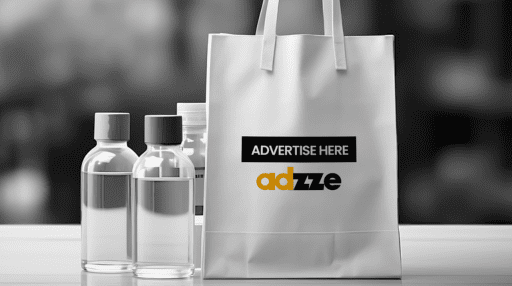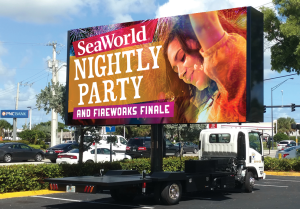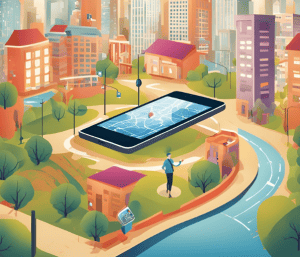Advertising with Pharmacy Displays: A Hidden Advantage for Non-Pharma Brands
When most marketers think of advertising with pharmacy displays, they imagine prescription brands, wellness products, or over-the-counter meds. But what if we told you that the real untapped opportunity lies with non-pharmaceutical brands?
Legal firms, insurance providers, and public service campaigns can all benefit from the hyperlocal, trust-based exposure that pharmacy display advertising provides. These environments are rich with context, timing, and emotional relevance—everything marketers need to make messages stick.
And it’s not just limited to displays. Pharmacy bag ads, in particular, offer direct, in-hand visibility at the moment of highest consumer attentiveness: when individuals are managing their health or caregiving for someone else.
In this blog, we’ll explore how advertising with pharmacy displays opens new doors for non-pharma verticals and why pharmacy bag advertising may be one of the most efficient tools in your local media mix.
Advertising with Pharmacy Displays: Why It Works for Legal, Insurance, and Public Campaigns
Most people associate pharmacies with medications—but they’re much more than that. Pharmacies are:
Community health hubs
Trust-building spaces
Repeatedly visited locations
Highly regulated, high-intent environments
This makes them ideal for sensitive or credibility-driven messaging—especially for industries like:
Personal injury law firms
Medicare and health insurance providers
Local governments or nonprofits promoting behavioral change
It’s not about selling a pill. It’s about showing up where trust is high.
Legal Brands and Pharmacy Display Ads: A Case for Relevance and Timing
Let’s start with legal. Personal injury, workers’ comp, or social security disability firms often face advertising barriers:
Ad fatigue on TV and billboards
Privacy concerns online
High CPCs in paid search
Now imagine placing a pharmacy bag ad that says:
“Injured? You’re not alone. Free consult. Local attorneys who care.”
That pharmacy bag is handed directly to a person who:
May have just picked up pain medication
Is managing chronic mobility issues
Has recently experienced an accident
This is not random targeting—it’s relevant, moment-based delivery.
And unlike traditional display ads, a pharmacy bag ad is held, brought home, placed on the counter, and often read again. That’s the tactile power most legal marketing lacks.
Insurance Brands: Educating and Enrolling at the Pharmacy Counter
Health insurance, life insurance, and Medicare Advantage plans often struggle to cut through the noise—especially during open enrollment periods. With digital privacy tightening and broadcast CPMs climbing, pharmacy environments offer a better alternative.
Here’s why advertising with pharmacy displays works perfectly for insurance brands:
Right message, right mindset
People in pharmacies are already thinking about their health, their future, and their expenses. That’s the perfect headspace for considering coverage, benefits, or switching providers.
Local targeting by ZIP code
Using pharmacy bag advertising, you can reach specific Medicare-eligible neighborhoods or tailor offers based on known risk factors (e.g., high cholesterol, diabetes prevalence).
Simple CTAs = Higher conversion
A clear message like “Compare Medicare Plans in Your Area” with a QR code printed directly on the pharmacy bag ad makes engagement easy and trackable.
Public Service Campaigns: Behavioral Impact at Scale
When governments or nonprofit organizations want to encourage behavioral change—whether it’s vaccine adoption, mental health awareness, or smoking cessation—they need:
Reach
Trust
Repetition
Physical presence
Pharmacies check every one of those boxes.
Examples of effective public messaging via pharmacy bag ads:
“Get your flu shot—free at participating clinics”
“Need help quitting smoking? Scan here for support”
“Your mental health matters. Find a counselor near you”
These messages become part of the health routine, especially when paired with visuals on pharmacy counters, endcaps, or branded pharmacy bags.
And unlike banner ads that disappear in seconds, a pharmacy bag advertisement may sit on a kitchen table or inside a purse for days.
Pharmacy Bag Advertising vs. Traditional OOH: Cost and ROI
Let’s talk dollars.
While billboards or subway ads may cost $20–40 CPM with no clear attribution, pharmacy bag advertising offers:
Lower media waste (delivered only in targeted areas)
High dwell time (in-hand for 15–30+ minutes)
Attribution via QR codes or vanity URLs
Flexibility to localize creative and languages
Sample Cost Breakdown:
Print + distribution of 20,000 pharmacy bag ads: ~$4,000
Targeted in 3 neighborhoods with high Medicare density
QR scan rate: 3.7% (740 scans)
Conversion rate: 12.4% (91 new leads)
Cost per qualified lead: ~$44
Compare that to TV or digital, and the numbers speak for themselves.
The Added Value of Pharmacy Staff Impressions
Here’s a hidden bonus few marketers consider: pharmacy staff visibility.
Your message isn’t just seen by the patient—it’s also seen by:
Pharmacists
Pharmacy techs
Caregivers accompanying patients
These professionals often become informal campaign amplifiers, reminding customers of what they read on the bag or pointing out nearby display materials. That’s earned reach, not paid impressions.
Best Practices for Non-Pharma Brands Using Pharmacy Displays
Keep messaging focused on help, not hype
Pharmacies are trust-first spaces. Avoid aggressive sales language and focus on problem-solving.
Use QR codes and short URLs for attribution
You’ll want to track performance by region and ad version.
Localize whenever possible
Add city names, ZIP codes, or regional support hotlines to personalize messaging.
Test across formats
Try pharmacy bag ads, counter displays, and floor decals to see which performs best for your audience and offer.
Time campaigns to behavior
For Medicare ads, target open enrollment. For injury law firms, align with seasonal upticks (e.g., winter slips or summer accidents).
Conclusion: Advertising with Pharmacy Displays Is Bigger Than Pharma
Advertising with pharmacy displays is no longer the exclusive domain of drug brands. Legal, insurance, and public service organizations have an incredible opportunity to tap into trusted, high-traffic environments and reach people when it matters most.
And with pharmacy bag advertising, the message doesn’t just land—it lingers.
If you’re looking for media that’s local, tactile, trackable, and context-rich, it’s time to put your brand in the hands of real people—literally.
Want to explore a hyperlocal pharmacy bag campaign tailored to your audience?
Let’s talk about how Adzze helps legal, insurance, and public service brands thrive with pharmacy display advertising.
https://youtube.com/shorts/eOK_Bq5TxlY?si=qoNlDEJZDsdP2Lx1






